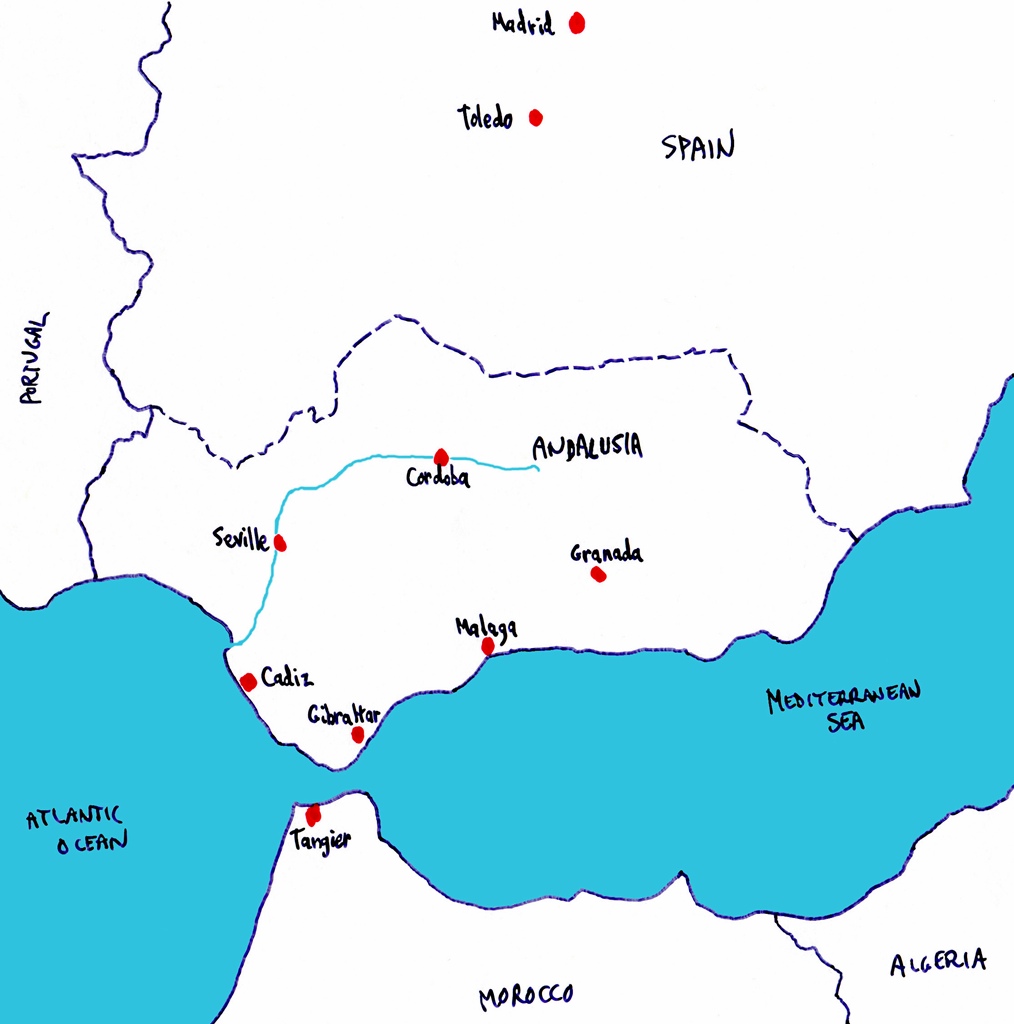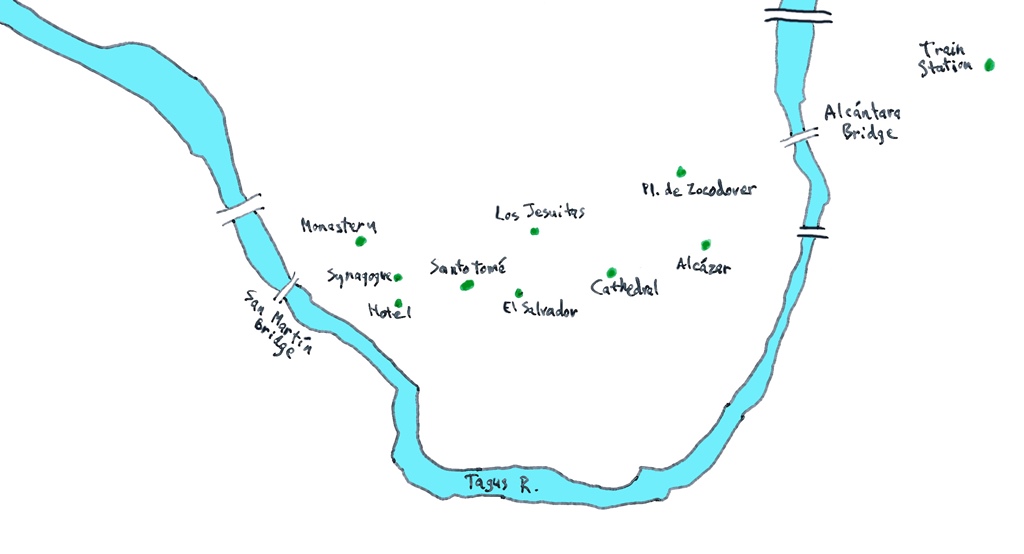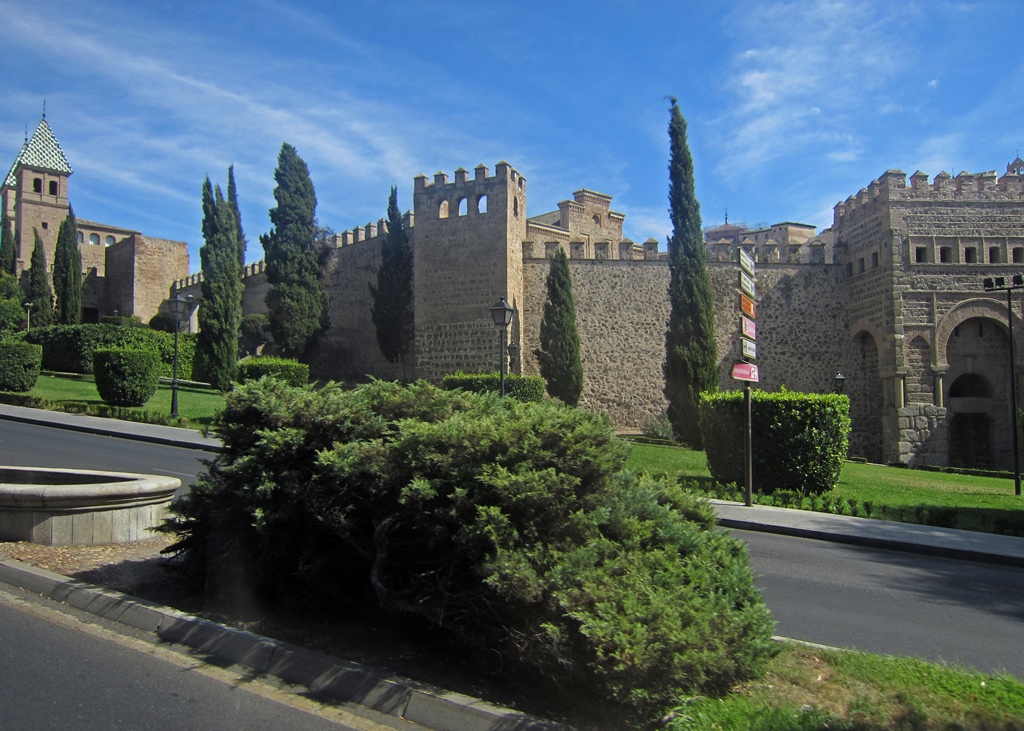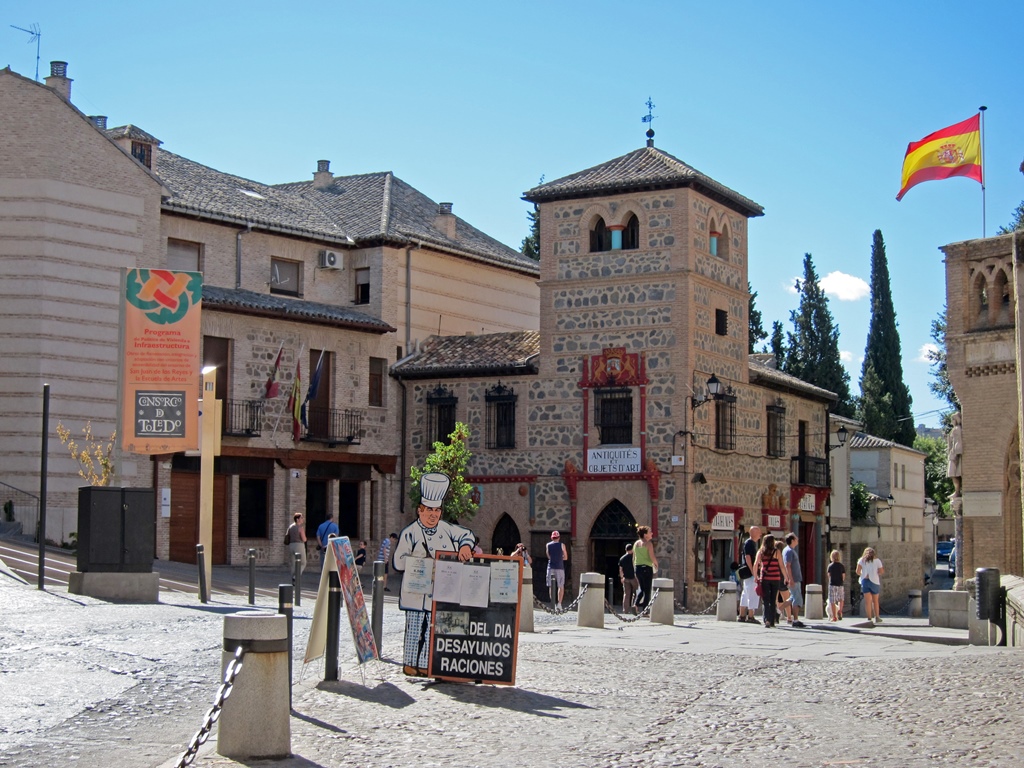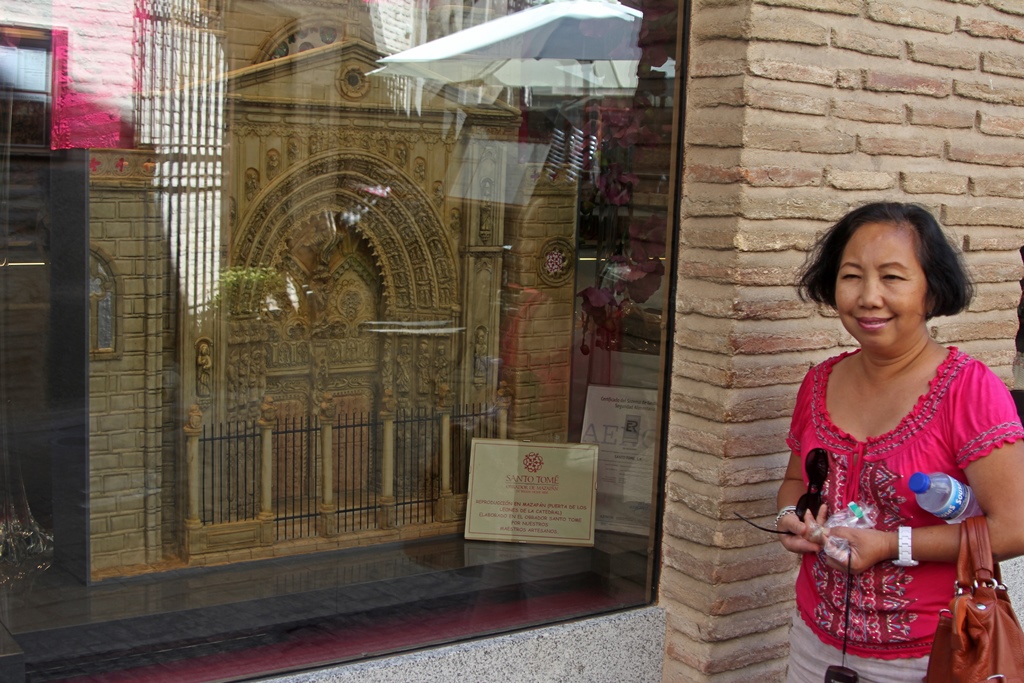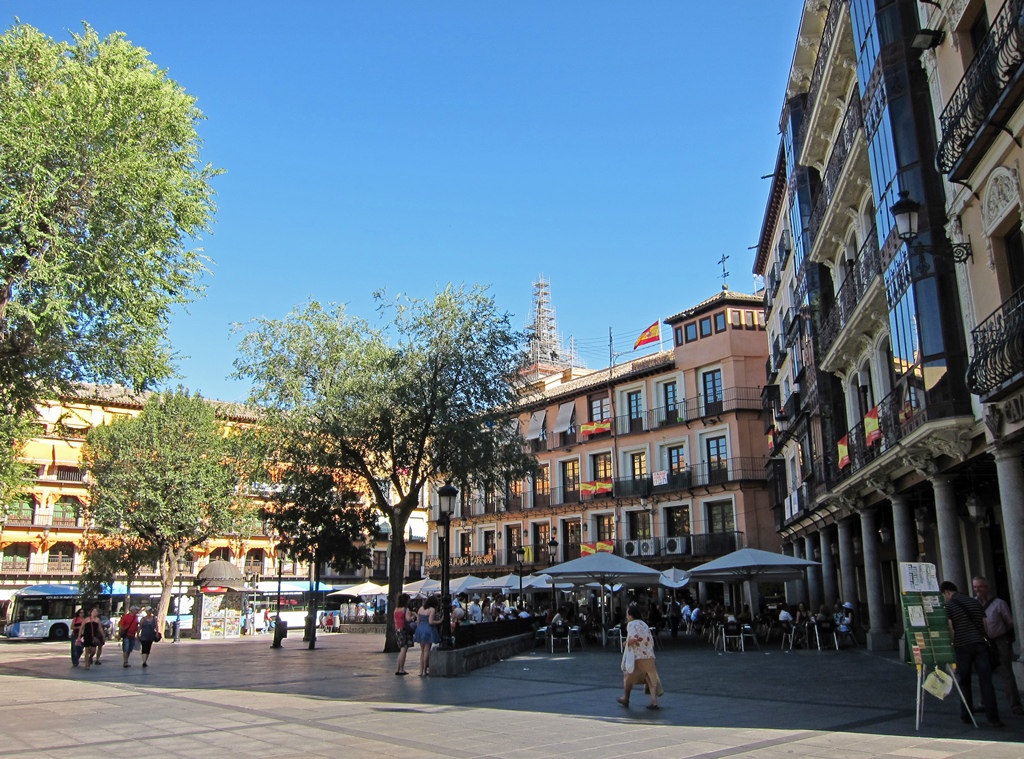Southern Spain
Toledo is a city of 83,000, located about 40 miles south of Madrid. It has a long and
complicated history, having been inhabited by Romans (who called it Toletum), and even
before that by Celtic tribes, from whom it was captured in 193 BC. As with most of the Iberian
Peninsula, Romans were succeeded by Visigoths, who made Toledo their capital around 554 AD.
The Visigoths were Christians, and under their rule Toledo gained prestige in the church by
hosting a series of councils to discuss issues of theology and church policy. But prestige
within the church didn't help against the Islamic Moors, who wrested control of the entire
peninsula away from the fractious Visigoths (who didn't take the invaders seriously until it
was too late), beginning around 712 AD.
The Moors eventually proved to be as fractious as the Visigoths had been, with their many
internal intrigues and betrayals creating opportunities for Christian invaders from the north
to recapture the peninsula, a piece at a time over the next several centuries. The piece
containing Toledo fell back into Christian hands in 1085, when Alfonso VI of León and Castile
took possession of the city. Though Toledo was not a capital city for the Moors (Toledo was
governed from Córdoba), its capture was a significant event in the Christian Reconquista
that lasted until 1492.
The period from the Moorish conquest until 1492 is sometimes referred to as La Convivencia
("The Coexistence"), during which the Muslims, Christians and Jews of the region lived
together relatively peacefully. The wonderfulness of this period is sometimes exaggerated – there
were certainly times when persecutions and forced conversions of Jews took place – but overall
the conditions experienced by Jews in Spain were far preferable to those taking place elsewhere
in Europe at the time. Toledo in particular exhibits artistic and architectural embellishments
from all three cultures.
But of course all of this coexistence stuff came to an end in 1492, when Ferdinand and Isabella's
Alhambra Decree outlawed the practice of Judaism, to be followed a few years later by the same
treatment for the practice of Islam. Toledo experienced one additional period of glory, when
Charles V mainly ruled the Holy Roman Empire from here, making Toledo its de facto
capital. But Charles's son Philip II brought this period to an end in 1561, when he moved the
Spanish court to the city of Madrid. While the spiritual center of Spain remained in Toledo,
the city became a political backwater, with its influence and population dwindling over the next
few centuries. But then, in the Romantic era of the 19th Century, the city was rediscovered by
tourists.
With the fervent desire to join the 21st Century throngs, we boarded a high-speed AVE train in
Córdoba, headed for Toledo. One problem – the AVE train doesn't go to Toledo. But the good
news is that it goes fast. To Madrid. Despite the map above, which would seem to imply that
Toledo is on the way to Madrid from Córdoba, the AVE gives Toledo a wide pass and lands at
Madrid's Atocha station instead, after a two-hour journey. Fortunately there are frequent
trains (about one per hour) from Madrid to Toledo, which make the trip in about 30 minutes. We
took one such train, arriving at Toledo's neo-Moorish train station around 2 PM. Toledo's
train station is not located in the Old Town. Theoretically, the distance can be walked, but
when encumbered with luggage, in the middle of a hot August day (August highs average 93), with
your hotel at the far end of the Old Town, this is probably not advisable. In any case, we
talked ourselves out of it pretty quickly and took a taxi, arriving a few minutes later at the
Sercotel San Juan de los Reyes.
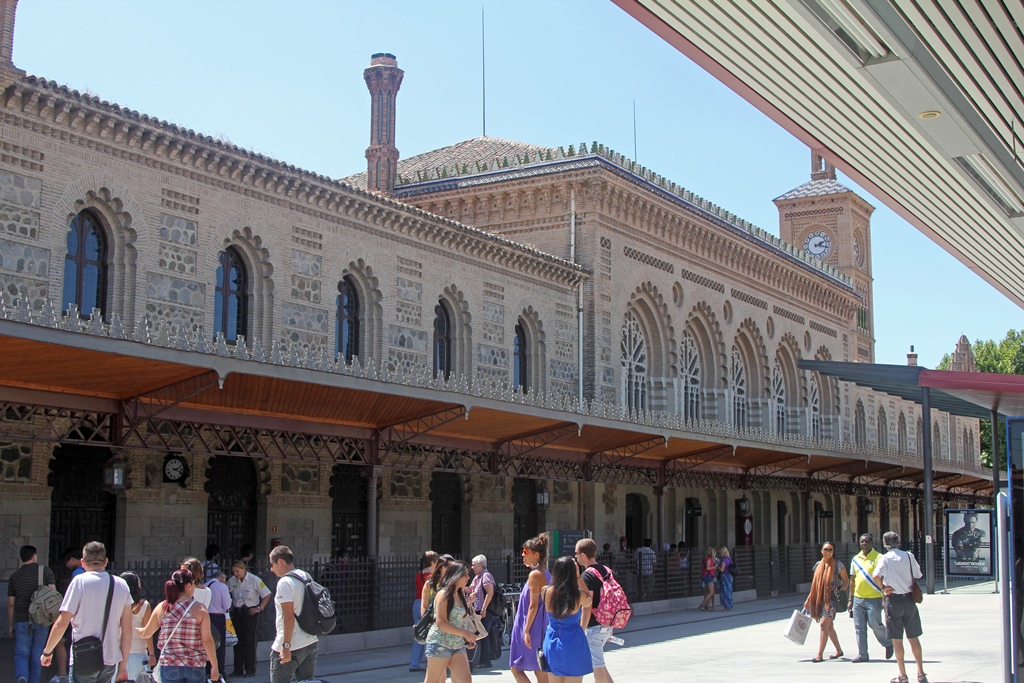
Toledo Train Station
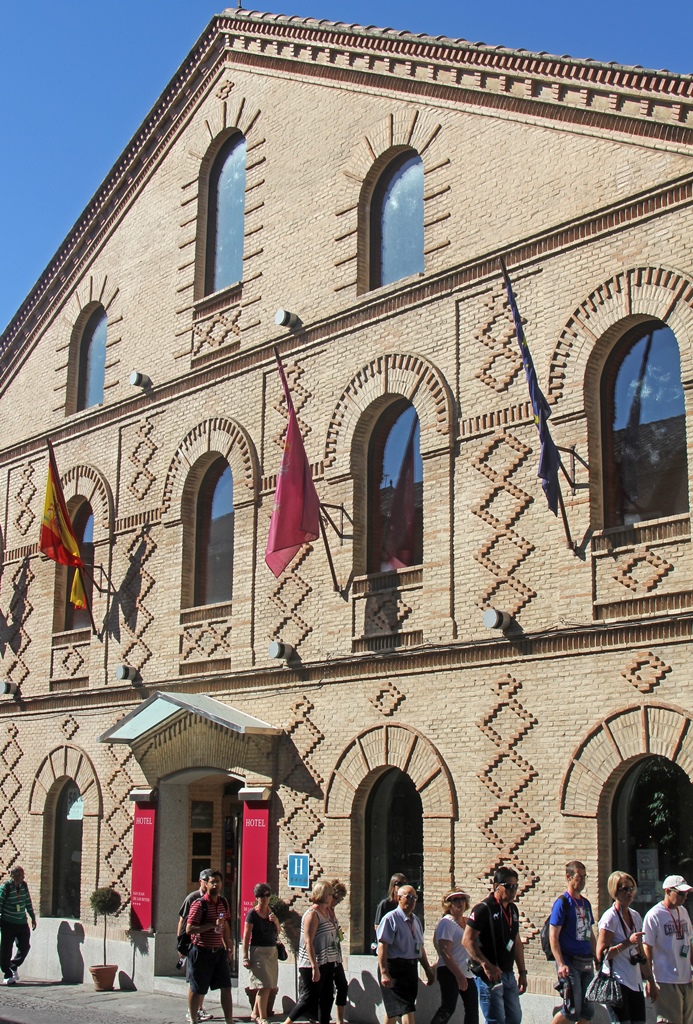
Sercotel San Juan de los Reyes
The early inhabitants of Toledo must have looked favorably on its defensibility. The
town is located on a steepish hill, where it is surrounded on three sides by a loop of the
Tagus River. This river (Rio Tajo en Español) eventually makes its serene way to the
Atlantic Ocean at Lisbon, Portugal, but as it approaches Toledo it enters something of a
gorge and becomes considerably less well-mannered for a short time, calming down again as it
exits the loop. There are two historical bridges that cross the gorge, the Puente de
Alcántara from the east (dating back to Roman times, though fixed/rebuilt many times since)
and the Puente de San Martín from the west (dating to the 14th Century; ditto on the fixes).
Defensive fortifications have been added over the centuries, but mainly on the north side of
the Old Town.
Toledo
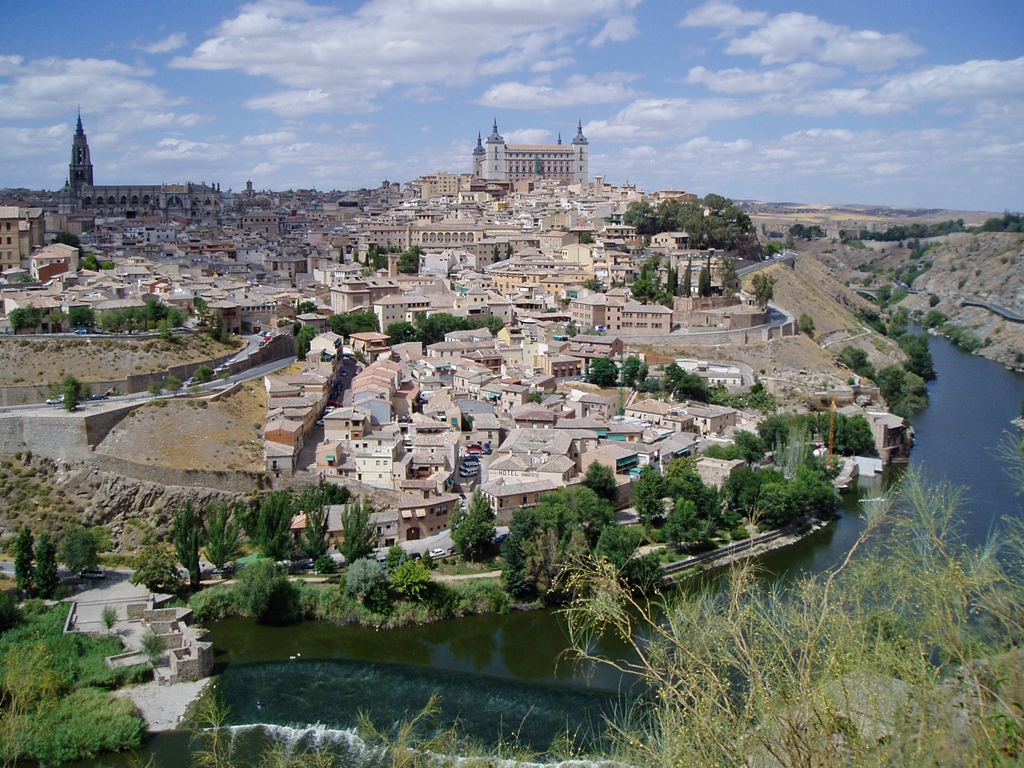
Toledo and Tagus River
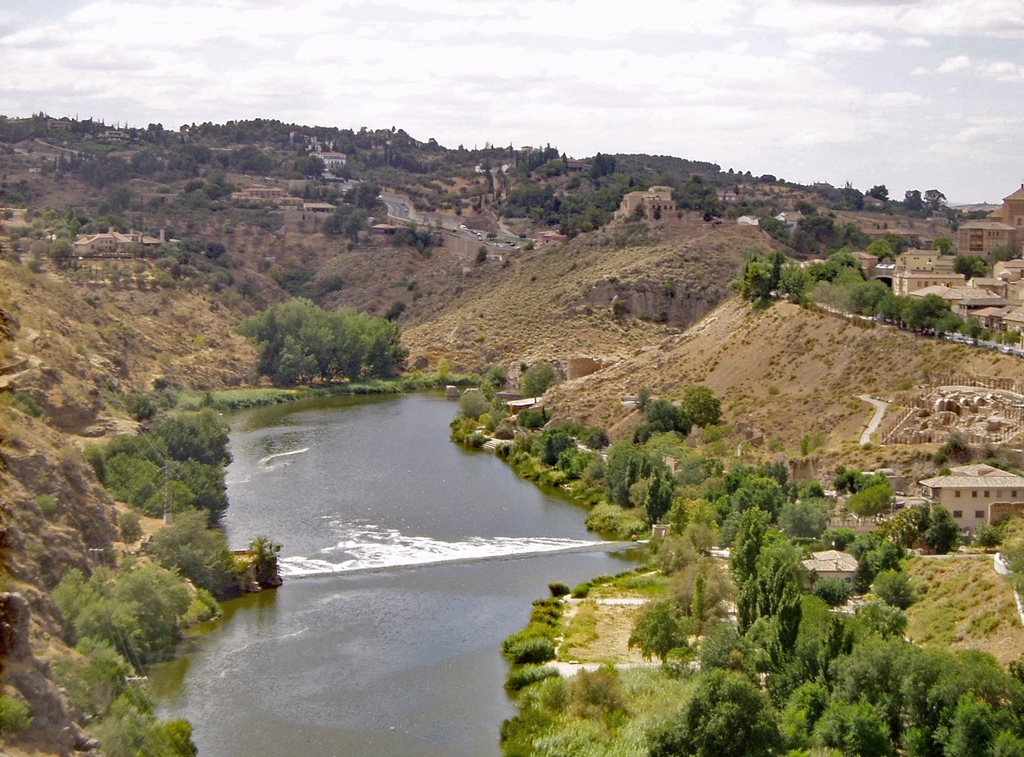
Tagus River
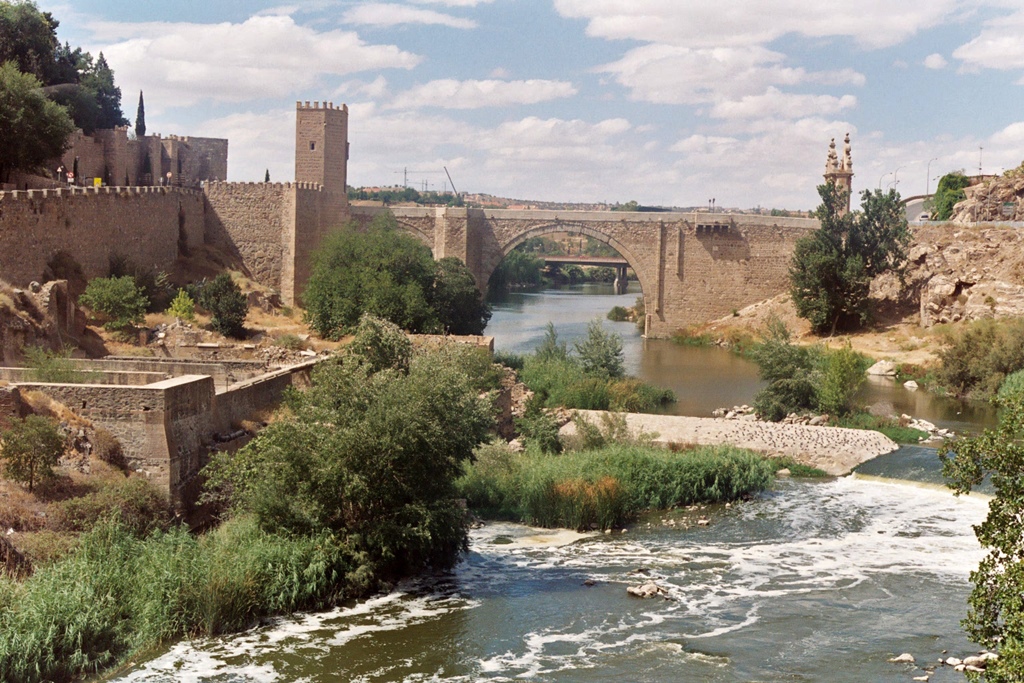
Alcántara Bridge and Tagus River
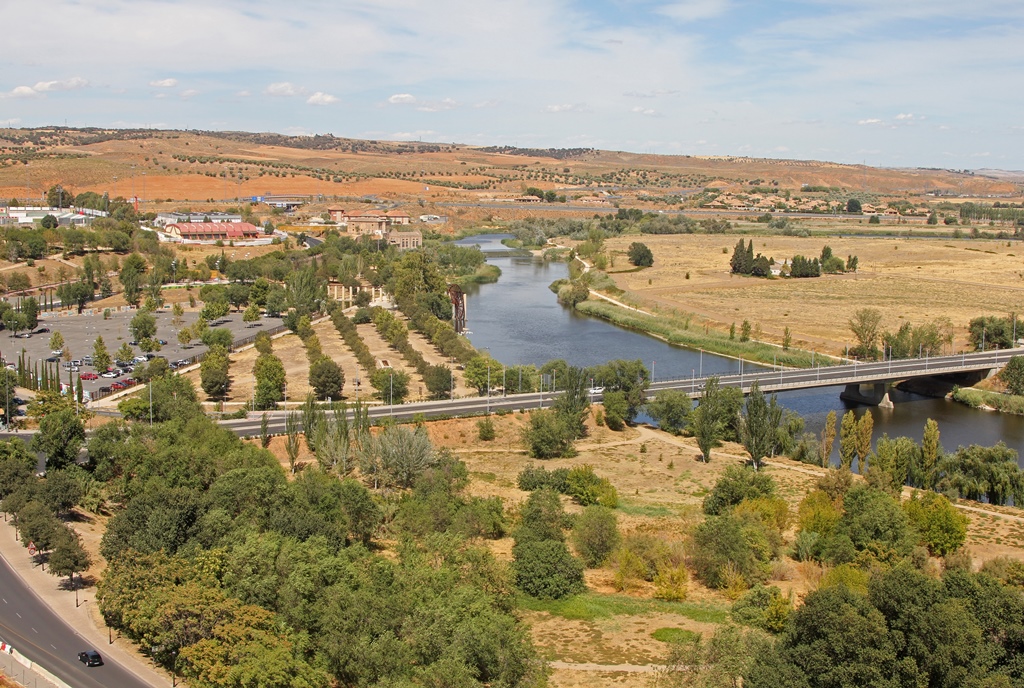
Tagus River North of Toledo
Northern Fortifications
There are people who have tried to romanticize Toledo as the "Rome of Spain", going so far
as to represent Toledo as having been built on seven hills, but surveyors armed with
topographic maps have only been able to detect maybe four. From across the river, it pretty
much looks like one big hill, but this is plenty to add an element of physical exertion to
the difficulty of navigating the place. Toledo is a tangle of steep, narrow, crooked
streets, lacking any obvious organization. Bring your GPS. At least there are a lot of
shops to look at.

Street and Shops
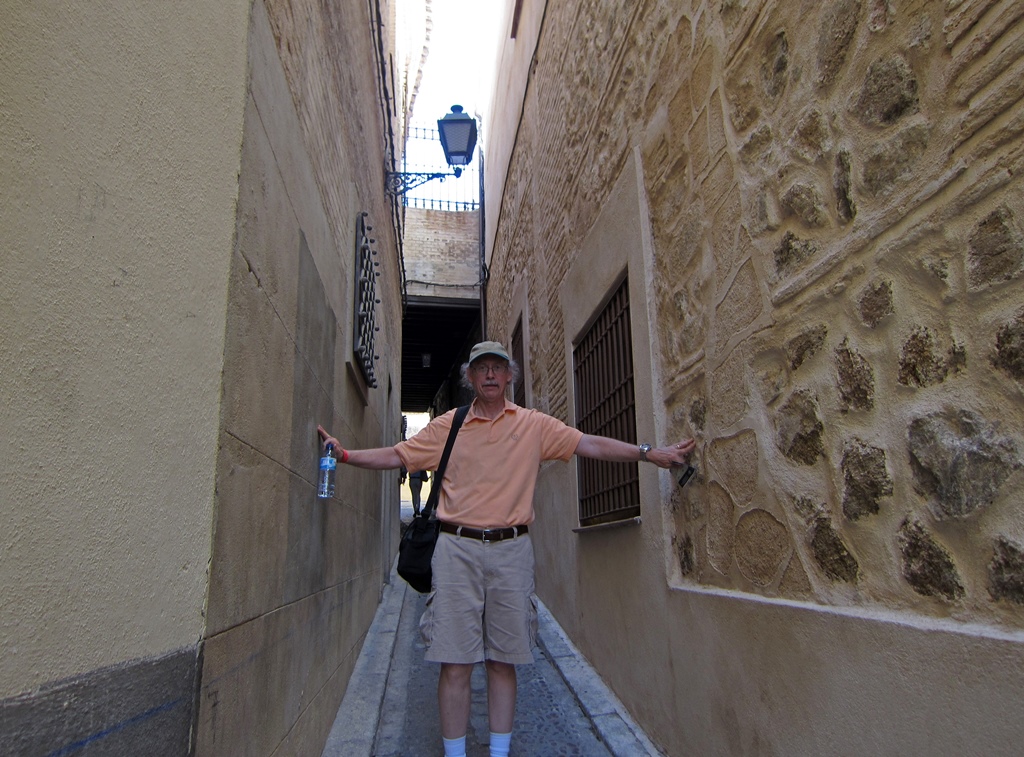
Bob and Narrow Street
Toledo is historically famous for its metalworking, in particular producing much sought-after
bladed weapons. You can still buy them at some of the shops, but whether the knives and
swords sold to tourists are up to the old standards (or are even made in Toledo) would be for
you to determine. You probably shouldn't pack them in your carry-on when coming home.
Antique Store on Calle de los Reyes Católicos
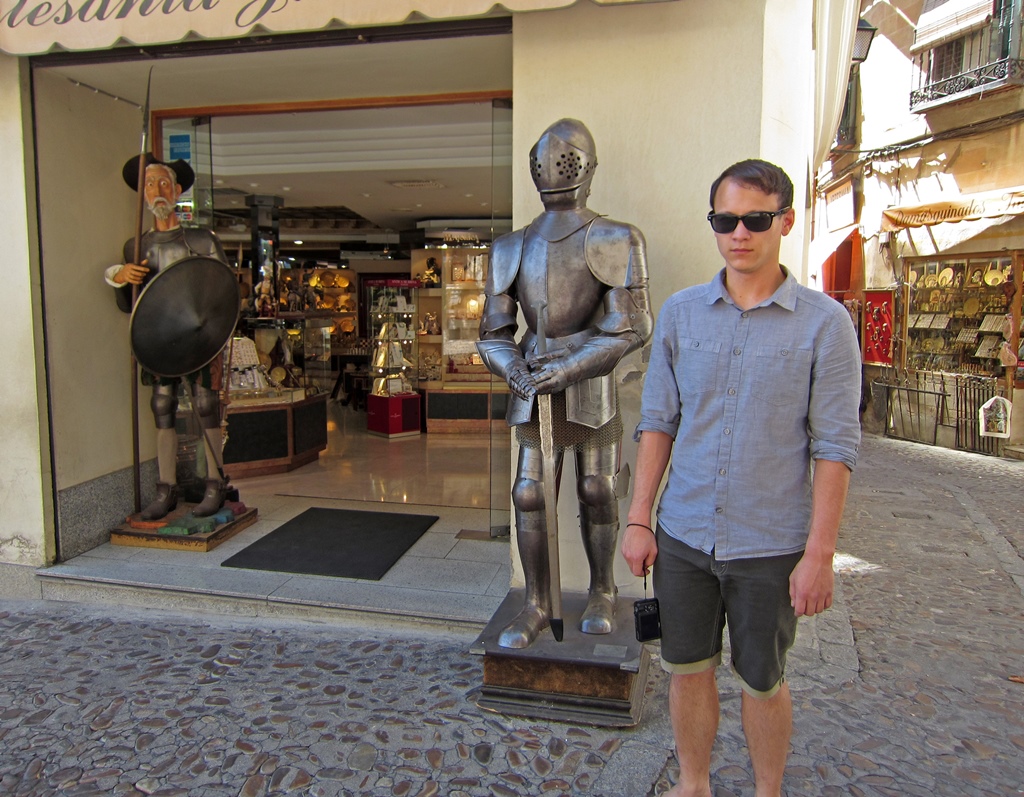
Philip and Armor
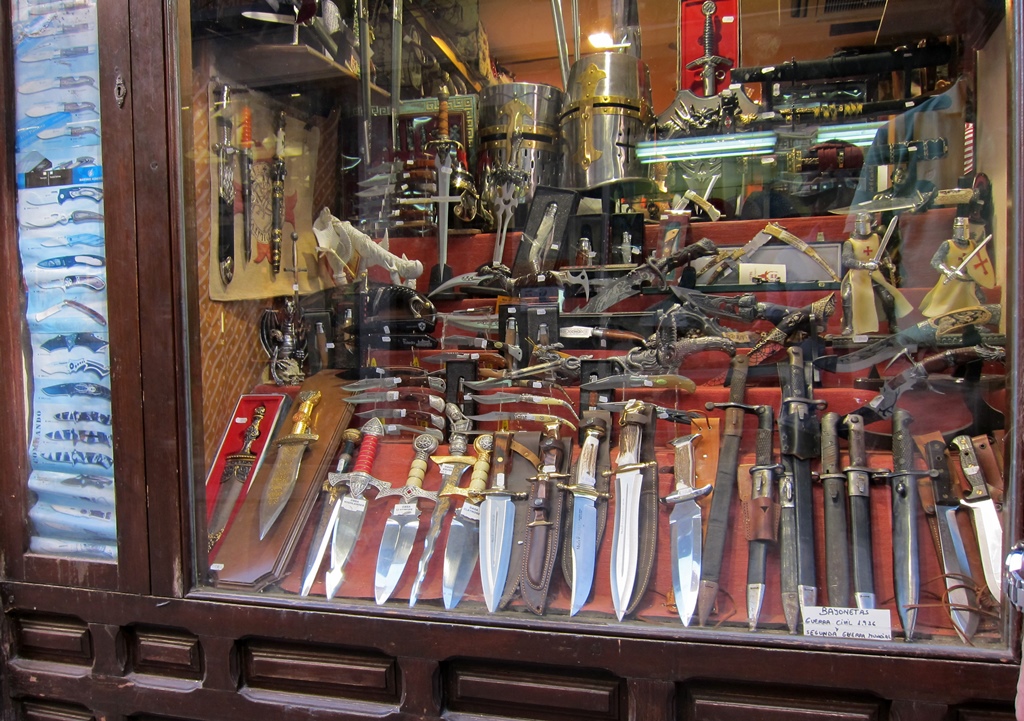
Shop Window with Many Knives
A less threatening specialty of Toledo would be its pastries, in particular its marzipan
(mazapán in the local tongue). Toledo marzipan is different from the more gelatinous
marzipan found in northern Europe and most of the world, usually encased in chocolate. In
Toledo it's more of an almondy pastry, and it's really good – pretty much a requirement for
visitors. One thing common to both types of marzipan (besides the almond content) is its
ability to be fashioned into imaginative shapes.
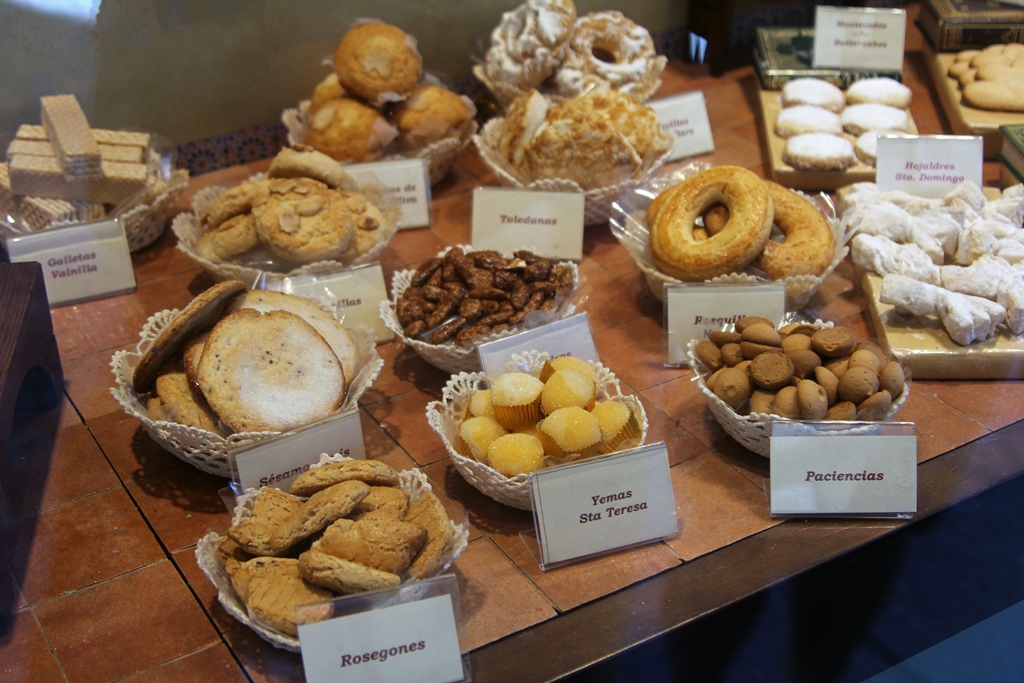
Pastries in Window
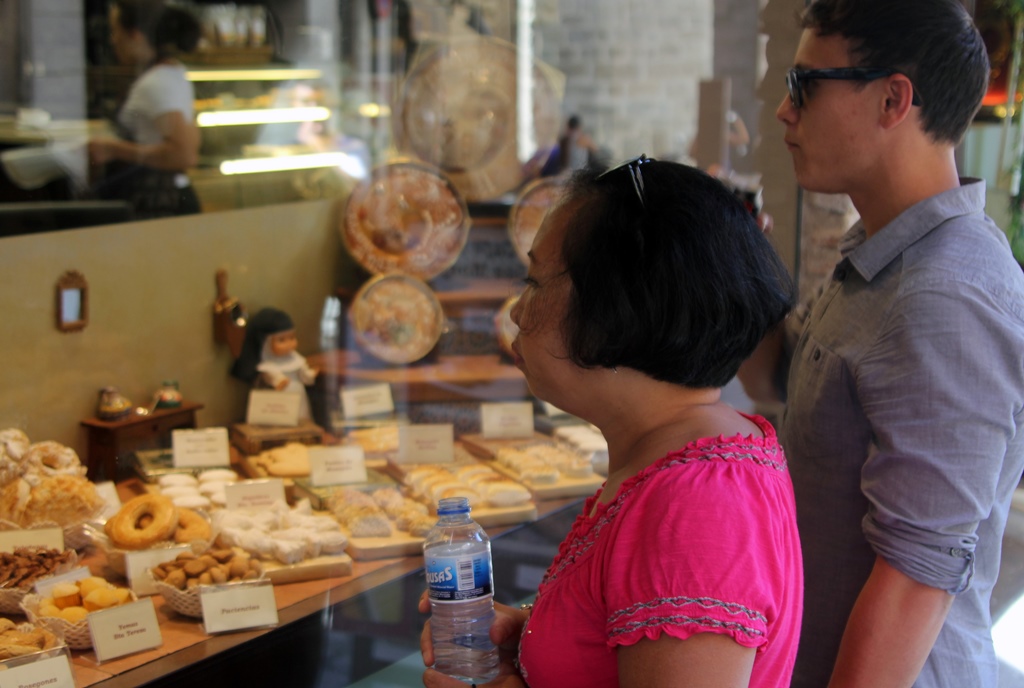
Nella and Philip Gazing at Pastries
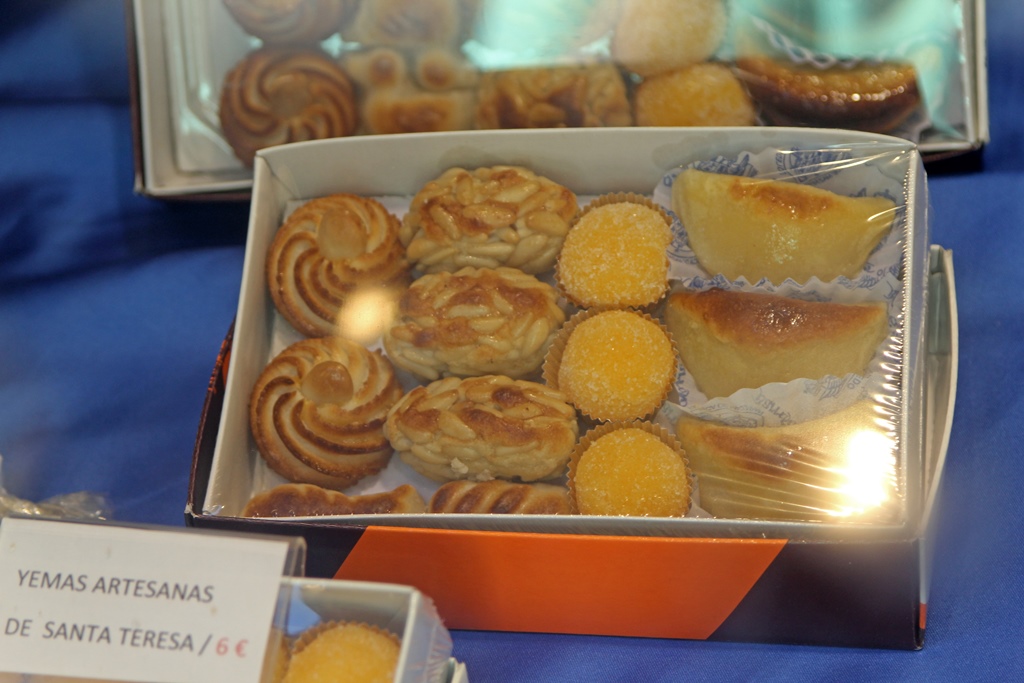
Box of Toledo Marzipan
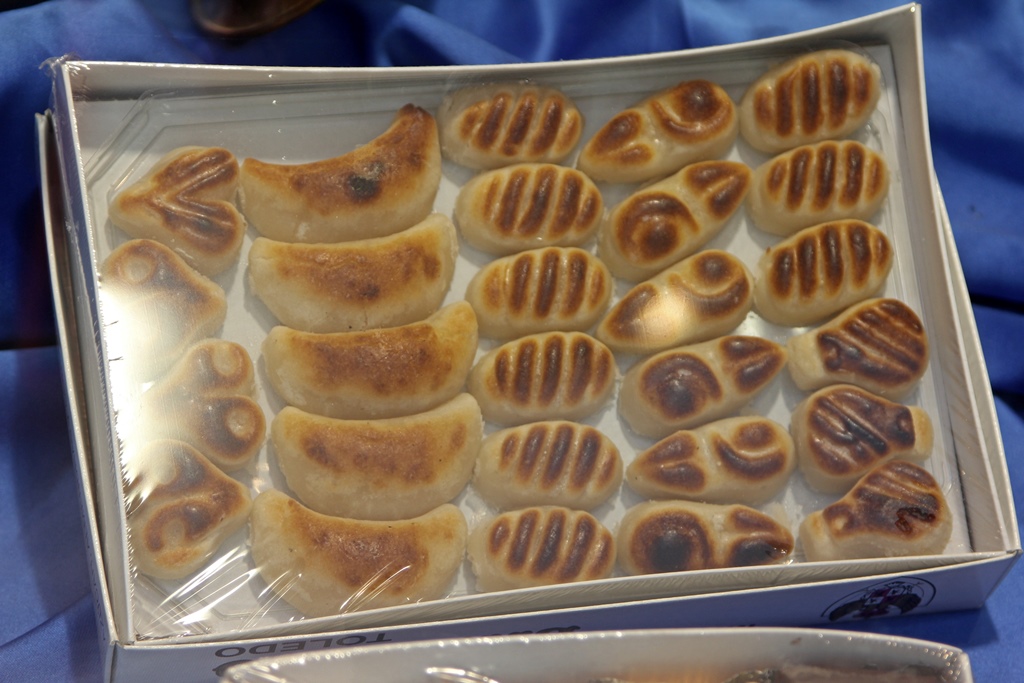
Box of Toledo Marzipan
Nella and Santo Tomé Church in Marzipan
While it can be difficult to find your way in Toledo, there are plenty of landmarks and
distinctive plazas which you can use to help get your bearings. The main plaza is
probably the Plaza de Zocodover, in the eastern part of the Old Town. This plaza has
been used as a marketplace, as least back into Moorish times, and is still surrounded
by places to shop and eat. It was also used by the authorities as a place of punishment
(i.e. gruesome public executions) for various infractions, including heresy (Toledo was
Spain's religious center during the time of the Spanish Inquisition). Another plaza of
note is the Plaza del Ayuntamiento, whose name refers to the Town Hall located on the
square.
Plaza de Zocodover
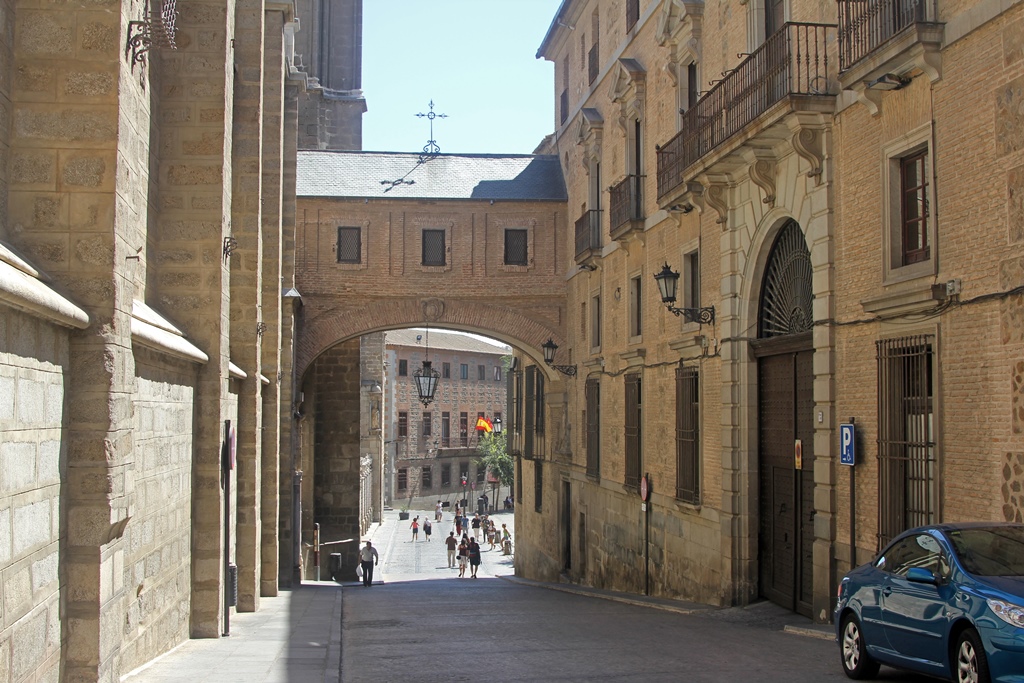
Passageway into Plaza del Ayuntamiento
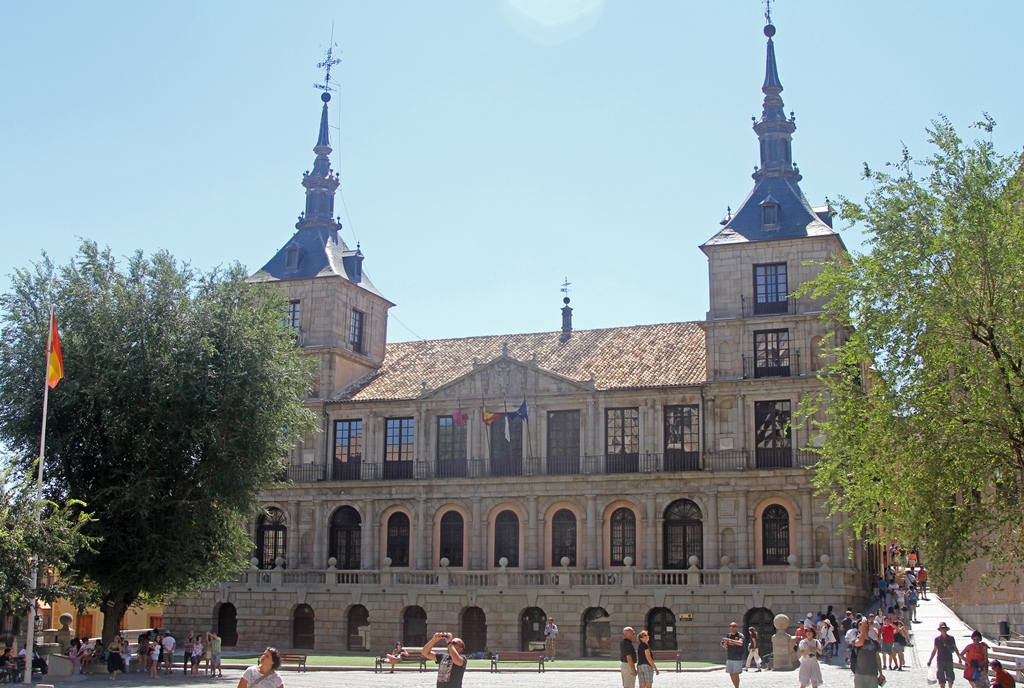
Toledo Town Hall
Also located on this square are the Archbishop's Palace and the Cathedral. We'd heard
things about the Cathedral, and headed over to visit as soon as we'd dropped off our luggage at
the hotel.

